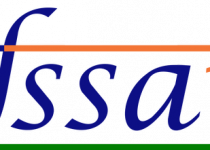Butylene Glycol Market Size, Share, Trend & Growth | 2032

The global Butylene Glycol Market Size has shown remarkable resilience and growth, with increasing demand across various industries such as cosmetics, pharmaceuticals, and food and beverage sectors. As a key ingredient in personal care and cosmetic products, butylene glycol plays a significant role in the formulation of creams, lotions, and serums. The market is poised to grow at a CAGR of 4.80% during the forecast period of 2024-2032. This article delves into the key benefits, driving factors, challenges, market segmentation, and the outlook for the butylene glycol market.
Key Benefits of Butylene Glycol
-
Versatile Application: Butylene glycol is a highly versatile compound, making it a key ingredient in multiple industries such as personal care, pharmaceuticals, and food processing. Its ability to improve product texture, stabilize formulations, and act as a humectant enhances its usage.
-
Cosmetic and Skincare Industry: In the cosmetic and skincare industry, butylene glycol is widely used for its moisturizing properties, making it a crucial component in creams, serums, and lotions. It not only helps in retaining moisture but also provides a smooth texture, making it a preferred choice among manufacturers.
-
Low Toxicity: One of the major benefits of butylene glycol is its low toxicity. This makes it safe for use in a wide range of products, especially those that come in contact with the skin, including baby products.
-
Improved Product Shelf Life: Butylene glycol acts as a solvent that enhances the stability of products, which increases their shelf life. This benefit is particularly useful in cosmetic formulations, food products, and pharmaceuticals, where product longevity is important.
Key Industry Developments
-
Innovations in Cosmetics: Major cosmetic brands are increasingly using butylene glycol due to its hydrating properties, which have led to the development of advanced skincare and beauty products. Leading companies such as L’Oréal, Estée Lauder, and Procter & Gamble are incorporating butylene glycol in their high-end product lines to meet the growing demand for anti-aging and moisturizing solutions.
-
Sustainability Initiatives: With increasing focus on sustainability, there has been a shift towards sourcing butylene glycol from renewable raw materials. This development aligns with the global trend of using bio-based chemicals to reduce the carbon footprint of the chemical industry.
-
Expansion in Pharmaceuticals: The pharmaceutical industry has also witnessed an uptick in the use of butylene glycol in drug formulations, particularly in oral and topical medications. Companies are investing in R&D to explore new uses of butylene glycol as a stabilizing agent in drug delivery systems.
Driving Factors
-
Rising Demand for Skincare Products: With consumers becoming increasingly conscious about skincare and personal grooming, the demand for high-quality skincare products is on the rise. Butylene glycol, known for its moisturizing properties, has become a preferred ingredient in these products, thus driving market growth.
-
Growth in the Pharmaceutical Industry: The pharmaceutical sector’s growing reliance on butylene glycol for drug formulation and delivery is a major factor propelling its demand. Its application as a solvent and stabilizer in various medical formulations has widened its usage.
-
Food and Beverage Industry Expansion: Butylene glycol’s use as a flavoring agent and a carrier in the food and beverage industry is contributing to the market’s growth. The rising demand for processed and packaged foods is likely to fuel its usage further.
-
Technological Advancements in Production: Technological innovations in chemical synthesis and production methods are improving the efficiency of butylene glycol manufacturing, reducing costs, and enabling mass production.
COVID-19 Impact
The COVID-19 pandemic had a mixed impact on the butylene glycol market. On one hand, there was a temporary decline in demand due to reduced industrial activities and disrupted supply chains, especially in the cosmetic and personal care segments. On the other hand, the pharmaceutical industry saw an increased demand for butylene glycol due to its usage in disinfectants and hand sanitizers, which surged during the pandemic.
Restraining Factors
-
Availability of Substitutes: The availability of other glycols, such as propylene glycol and glycerin, poses a challenge to the butylene glycol market. These alternatives often offer similar properties at lower costs, limiting butylene glycol’s market share.
-
Environmental Concerns: Despite the growing trend towards bio-based chemicals, the production of butylene glycol from petrochemical sources raises environmental concerns. The chemical industry’s reliance on fossil fuels may face regulatory pressure, restraining the market’s growth.
-
Fluctuating Raw Material Prices: The prices of raw materials used in the production of butylene glycol, such as butadiene, are highly volatile. Price fluctuations can increase production costs, making it difficult for manufacturers to maintain consistent profit margins.
Market Segmentation
-
By Type:
- Bio-based Butylene Glycol
- Petroleum-based Butylene Glycol
-
By Application:
- Cosmetics & Personal Care
- Pharmaceuticals
- Food & Beverage
- Industrial Applications
-
By End-User:
- Personal Care and Cosmetics Manufacturers
- Pharmaceutical Companies
- Food and Beverage Processors
- Industrial Manufacturers
Market Overview
The butylene glycol market, valued at approximately USD 4.8 billion in 2023, is expected to witness consistent growth driven by its increasing application across multiple industries. While the market faces challenges such as raw material price volatility and competition from substitutes, its expanding role in the cosmetics and pharmaceutical sectors will sustain demand.
Trends
-
Bio-based Alternatives: With sustainability being a growing concern, the trend of developing bio-based butylene glycol from renewable sources is gaining traction. Companies are focusing on reducing their carbon footprint and promoting eco-friendly products.
-
Rise in Organic and Natural Cosmetics: The increasing consumer preference for organic and natural products is influencing cosmetic manufacturers to adopt more natural ingredients. Butylene glycol, especially in its bio-based form, fits well into this trend, making it a popular choice for eco-conscious brands.
-
Innovations in Pharmaceuticals: The pharmaceutical industry continues to explore new applications for butylene glycol, particularly in innovative drug delivery systems, which will likely expand its role in healthcare.
Industry Segmentation
-
Personal Care and Cosmetics: This segment holds the largest market share due to the high demand for butylene glycol in skincare, makeup, and haircare products.
-
Pharmaceuticals: The growing use of butylene glycol in drug formulations, especially in topical and oral medications, is driving this segment’s growth.
-
Food and Beverage: While smaller in comparison, the food and beverage segment is expected to witness moderate growth, driven by increasing demand for processed foods and flavoring agents.
Regional Analysis/Insights
-
North America: North America holds a significant share of the butylene glycol market, thanks to the presence of a well-established cosmetics and pharmaceutical industry. The U.S. is expected to dominate the regional market due to high consumer demand for skincare products.
-
Europe: Europe is another key market, with increasing demand for natural and organic cosmetics. The region’s focus on sustainability and stringent regulatory standards are pushing manufacturers towards bio-based butylene glycol.
-
Asia-Pacific: The Asia-Pacific region is expected to see the fastest growth, driven by the booming personal care industry in countries like China, India, and Japan. The growing pharmaceutical sector in these countries is also contributing to market growth.
Major Key Players
- Daicel Corporation
- KH Neochem Co., Ltd.
- OXEA GmbH
- Godavari Biorefineries Ltd.
- A.B. Enterprises
- Others
Opportunities
-
Expanding Markets in Asia-Pacific: The rapid industrialization and urbanization in the Asia-Pacific region present significant growth opportunities for the butylene glycol market.
-
Bio-based Innovations: Companies focusing on bio-based butylene glycol are well-positioned to capture market share in regions that prioritize sustainability.
Challenges
-
Price Volatility: Managing the fluctuating prices of raw materials remains a significant challenge for manufacturers.
-
Environmental Regulations: Stricter environmental regulations in Europe and North America may limit the growth of petroleum-based butylene glycol.
Scope
The butylene glycol market has a broad scope due to its versatile applications across multiple industries, including cosmetics, pharmaceuticals, food and beverage, and industrial manufacturing. With ongoing innovations and sustainability trends, the market is expected to evolve significantly during the forecast period.
--------------------------------
Guestbeat.com Notice!
Audience discretion is needed, Read TOS.
Submit Guest Post / Read Latest / Category List
App & Rate-Us / Subscribe Daily Newsletter (FREE)



